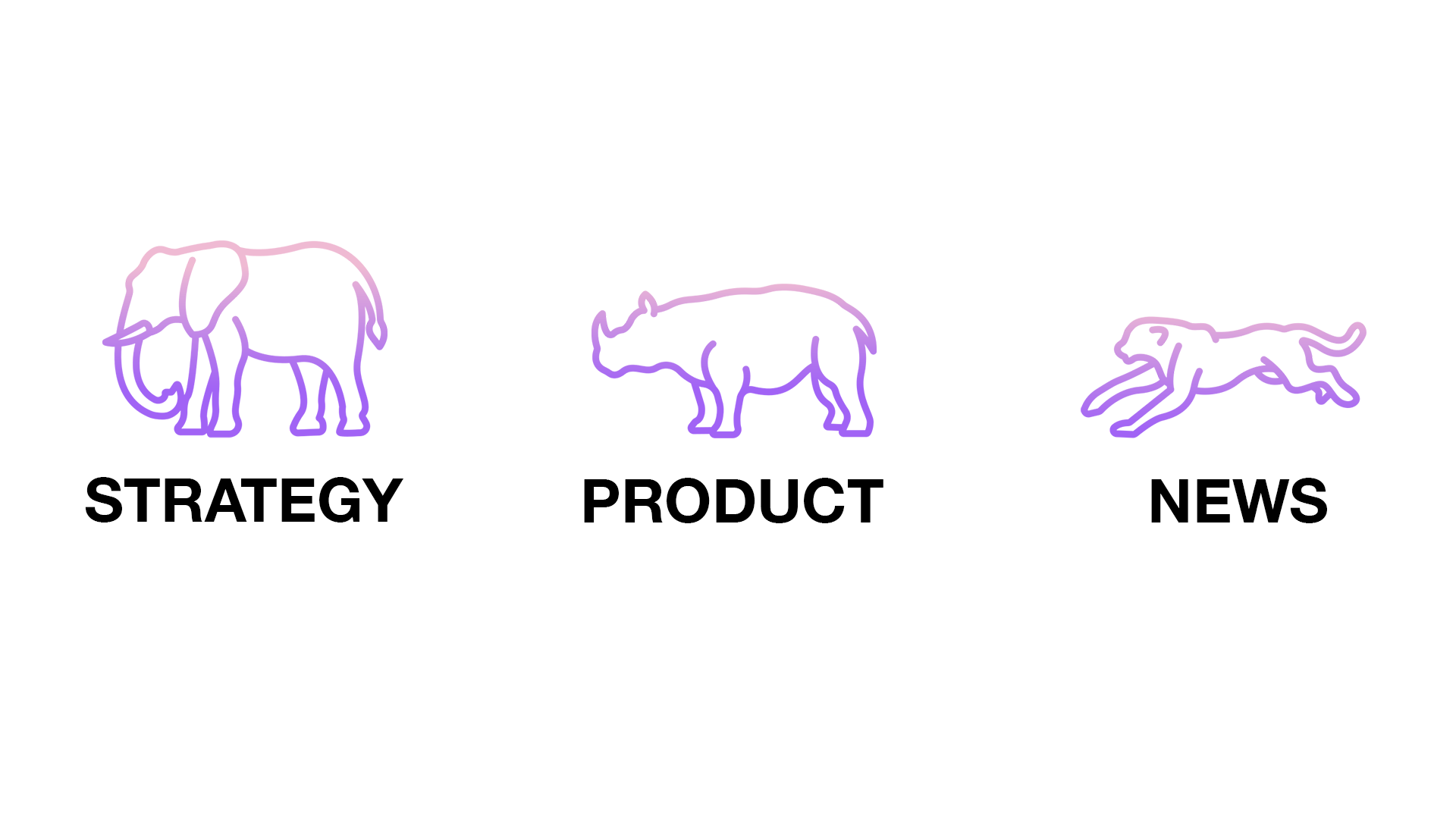Culture of Speed
Why the culture of speed makes it hard for newsrooms to embrace a product mindset.

The business of news is fast-paced. New information surfaces faster than ever before; bulletins, press releases, and tweets drop in by the second. For the past years, newsrooms had to adapt to process the ever-faster spinning news cycles, verifying and curating the most important and relevant information for their audiences.
The traditional deadline approach from print times has been largely abandoned in the digital publishing realm. Instead, stories get published throughout the day to meet the demand. Then, journalists move on quickly to a follow-up or even a new story.
The increased pace creates many challenges around journalism itself worth exploring. However, this culture of speed established in newsrooms also makes it difficult for media organisations to embrace the transformation to a product-focused mindset fully.
Agility On Steroids
People working in product management—including myself—tend to complain about the newsroom's lack of understanding of agile development. There are undoubtedly true aspects to this.
Usually, a story is refined until published; changes occur rather occasionally than institutionalised. The journalists' strive to perfection, paired with a still roaming deadline socialisation, is fundamentally different from an iterative approach to product development.
But the more I think about it, the less confident I am in this theory that a lack of knowledge is why news organisations struggle with a product mindset. There are two key reasons:
- The production of journalism is in itself an agile process. Like any product, stories go through discovery (research, investigation) and delivery (writing, production) phases. Each draft is a prototype that is being re-iterated based on new information and feedback.
- Newsrooms are masters in agility. No organisation outside of journalism can react as quickly to new developments as newsrooms. In case of breaking news, priorities are shifted dramatically in a matter of minutes. Everyone that has experienced a breaking news situation for the first time is stunned by the impressive adaption rate.
Basically, newsrooms live agility on steroids. They move as fast as the news cycle requires.
Note
This observation is only valid for highly digital, news-driven organisations. Local newspapers still relying heavily on print indeed struggle with agility, while more magazine-like online publications have a much slower pace.
Understanding Cultural Differences
If we leave assumptions and biases aside, we can assess that both the newsroom and the product development work agilely—the main difference is the speed. Additionally, every organisation has a third gear that moves even slower: Strategy. It's even more complex to translate to everyday work in a newsroom than product development; strategy plays hardly any role in deciding which stories to write. On the other hand, strategy is a massive factor in a product roadmap.
Update
Of course, strategy plays a significant role in the editorial direction of a news organisation. However, in journalists' daily work, it isn't as prevalent as it is for product management.

Nevertheless, understanding that the newsroom and product development basically work with the same principles but at different speeds is crucial. It creates a common ground for communication and education, which drive culture change.
As a product manager in a media organisation, it is essential to be aware of the culture of speed inside the newsroom. Furthermore, he has to thoroughly understand how the journalists work on their part of the product. These two factors heavily influence the interactions between newsroom and product to happen.
The culture of speed often leads to exaggerated expectations. "We need feature X now!" or "Why does feature Y take so long?" are phrases you‘ll often come by in discussions with newsroom staff. The constant urgency is deeply engrained into journalists' mindsets and drives their behaviour in every interaction. As a journalist turned product manager, I still feel this need for speed.
Attach Communication To Familiarity
If a product manager has no or little knowledge of the cultural background of these phrases, it gets difficult to find satisfying answers. So, an effective way is to find familiarity in comparisons between journalism and development.
Here are some examples:
- Product development is like investigative reporting. You need time and teamwork to get to the bottom of the user story.
- The roadmap is like an editorial publication schedule. Priorities can change like news cycles, but they usually shift not so fast.
- User-centred development is like optimising a headline. We want to deliver a product that captivates the audiences and keeps them engaged.
You can develop many other comparisons to create a common language and start educating effectively.
Don't Neglect The Differences Either
Naturally, it is not the solution to bridge every difference. Communicating that the differences aren't as big isn't enough. Education still needs to take place.
Product development has more constraints and stakeholders that need consideration, whereas journalists (in an ideal world) only are bound by their principles and only answer to the audience.
Furthermore, product iterations usually have larger leverage and more considerable risk. In comparison, the newsroom speeds through dozens, even hundreds of iterations with every published story, the individual article itself has a much lower impact. Suppose it performs well, great! If it doesn't, it's soon forgotten. There's no lasting impact on the product.
Note
Obviously, journalism can have a great impact on society and policy or the product and brand perception. While an individual story may trigger an impact on the first two, it's far more unlikely that a single story changes how the product or brand is perceived.
However, if there's a product change, it may instantly impact everything—from the user experience to advertising performance. And these changes cannot easily be reverted like a typo in a text. Research, consideration, and alignment must be thorough as the danger of significant impact loom above every feature change. It takes more time.
Best Of Both Worlds
Now, both the immense speed of the newsroom and the slower tempo of product development have their righteous existence. They're needed to create success in their respective fields, and pitting one speed against the other isn't a good idea.
However, to see progress within the shift to a product-driven organisation, we have to think about how we can bring both worlds together and even learn from each other. The questions around effective collaboration can be:
- What can product managers learn from the speed of the newsroom? And vice versa?
- What strategic goals can be translated to product and editorial to enable a department-spanning collaboration?
- Which opportunities provide the best area to grow from each other's strengths?
Ultimately, only joint forces between all departments in the organisation leads to an effective transformation process.





